8.2: Salads
- Page ID
- 21573
\( \newcommand{\vecs}[1]{\overset { \scriptstyle \rightharpoonup} {\mathbf{#1}} } \)
\( \newcommand{\vecd}[1]{\overset{-\!-\!\rightharpoonup}{\vphantom{a}\smash {#1}}} \)
\( \newcommand{\id}{\mathrm{id}}\) \( \newcommand{\Span}{\mathrm{span}}\)
( \newcommand{\kernel}{\mathrm{null}\,}\) \( \newcommand{\range}{\mathrm{range}\,}\)
\( \newcommand{\RealPart}{\mathrm{Re}}\) \( \newcommand{\ImaginaryPart}{\mathrm{Im}}\)
\( \newcommand{\Argument}{\mathrm{Arg}}\) \( \newcommand{\norm}[1]{\| #1 \|}\)
\( \newcommand{\inner}[2]{\langle #1, #2 \rangle}\)
\( \newcommand{\Span}{\mathrm{span}}\)
\( \newcommand{\id}{\mathrm{id}}\)
\( \newcommand{\Span}{\mathrm{span}}\)
\( \newcommand{\kernel}{\mathrm{null}\,}\)
\( \newcommand{\range}{\mathrm{range}\,}\)
\( \newcommand{\RealPart}{\mathrm{Re}}\)
\( \newcommand{\ImaginaryPart}{\mathrm{Im}}\)
\( \newcommand{\Argument}{\mathrm{Arg}}\)
\( \newcommand{\norm}[1]{\| #1 \|}\)
\( \newcommand{\inner}[2]{\langle #1, #2 \rangle}\)
\( \newcommand{\Span}{\mathrm{span}}\) \( \newcommand{\AA}{\unicode[.8,0]{x212B}}\)
\( \newcommand{\vectorA}[1]{\vec{#1}} % arrow\)
\( \newcommand{\vectorAt}[1]{\vec{\text{#1}}} % arrow\)
\( \newcommand{\vectorB}[1]{\overset { \scriptstyle \rightharpoonup} {\mathbf{#1}} } \)
\( \newcommand{\vectorC}[1]{\textbf{#1}} \)
\( \newcommand{\vectorD}[1]{\overrightarrow{#1}} \)
\( \newcommand{\vectorDt}[1]{\overrightarrow{\text{#1}}} \)
\( \newcommand{\vectE}[1]{\overset{-\!-\!\rightharpoonup}{\vphantom{a}\smash{\mathbf {#1}}}} \)
\( \newcommand{\vecs}[1]{\overset { \scriptstyle \rightharpoonup} {\mathbf{#1}} } \)
\( \newcommand{\vecd}[1]{\overset{-\!-\!\rightharpoonup}{\vphantom{a}\smash {#1}}} \)
\(\newcommand{\avec}{\mathbf a}\) \(\newcommand{\bvec}{\mathbf b}\) \(\newcommand{\cvec}{\mathbf c}\) \(\newcommand{\dvec}{\mathbf d}\) \(\newcommand{\dtil}{\widetilde{\mathbf d}}\) \(\newcommand{\evec}{\mathbf e}\) \(\newcommand{\fvec}{\mathbf f}\) \(\newcommand{\nvec}{\mathbf n}\) \(\newcommand{\pvec}{\mathbf p}\) \(\newcommand{\qvec}{\mathbf q}\) \(\newcommand{\svec}{\mathbf s}\) \(\newcommand{\tvec}{\mathbf t}\) \(\newcommand{\uvec}{\mathbf u}\) \(\newcommand{\vvec}{\mathbf v}\) \(\newcommand{\wvec}{\mathbf w}\) \(\newcommand{\xvec}{\mathbf x}\) \(\newcommand{\yvec}{\mathbf y}\) \(\newcommand{\zvec}{\mathbf z}\) \(\newcommand{\rvec}{\mathbf r}\) \(\newcommand{\mvec}{\mathbf m}\) \(\newcommand{\zerovec}{\mathbf 0}\) \(\newcommand{\onevec}{\mathbf 1}\) \(\newcommand{\real}{\mathbb R}\) \(\newcommand{\twovec}[2]{\left[\begin{array}{r}#1 \\ #2 \end{array}\right]}\) \(\newcommand{\ctwovec}[2]{\left[\begin{array}{c}#1 \\ #2 \end{array}\right]}\) \(\newcommand{\threevec}[3]{\left[\begin{array}{r}#1 \\ #2 \\ #3 \end{array}\right]}\) \(\newcommand{\cthreevec}[3]{\left[\begin{array}{c}#1 \\ #2 \\ #3 \end{array}\right]}\) \(\newcommand{\fourvec}[4]{\left[\begin{array}{r}#1 \\ #2 \\ #3 \\ #4 \end{array}\right]}\) \(\newcommand{\cfourvec}[4]{\left[\begin{array}{c}#1 \\ #2 \\ #3 \\ #4 \end{array}\right]}\) \(\newcommand{\fivevec}[5]{\left[\begin{array}{r}#1 \\ #2 \\ #3 \\ #4 \\ #5 \\ \end{array}\right]}\) \(\newcommand{\cfivevec}[5]{\left[\begin{array}{c}#1 \\ #2 \\ #3 \\ #4 \\ #5 \\ \end{array}\right]}\) \(\newcommand{\mattwo}[4]{\left[\begin{array}{rr}#1 \amp #2 \\ #3 \amp #4 \\ \end{array}\right]}\) \(\newcommand{\laspan}[1]{\text{Span}\{#1\}}\) \(\newcommand{\bcal}{\cal B}\) \(\newcommand{\ccal}{\cal C}\) \(\newcommand{\scal}{\cal S}\) \(\newcommand{\wcal}{\cal W}\) \(\newcommand{\ecal}{\cal E}\) \(\newcommand{\coords}[2]{\left\{#1\right\}_{#2}}\) \(\newcommand{\gray}[1]{\color{gray}{#1}}\) \(\newcommand{\lgray}[1]{\color{lightgray}{#1}}\) \(\newcommand{\rank}{\operatorname{rank}}\) \(\newcommand{\row}{\text{Row}}\) \(\newcommand{\col}{\text{Col}}\) \(\renewcommand{\row}{\text{Row}}\) \(\newcommand{\nul}{\text{Nul}}\) \(\newcommand{\var}{\text{Var}}\) \(\newcommand{\corr}{\text{corr}}\) \(\newcommand{\len}[1]{\left|#1\right|}\) \(\newcommand{\bbar}{\overline{\bvec}}\) \(\newcommand{\bhat}{\widehat{\bvec}}\) \(\newcommand{\bperp}{\bvec^\perp}\) \(\newcommand{\xhat}{\widehat{\xvec}}\) \(\newcommand{\vhat}{\widehat{\vvec}}\) \(\newcommand{\uhat}{\widehat{\uvec}}\) \(\newcommand{\what}{\widehat{\wvec}}\) \(\newcommand{\Sighat}{\widehat{\Sigma}}\) \(\newcommand{\lt}{<}\) \(\newcommand{\gt}{>}\) \(\newcommand{\amp}{&}\) \(\definecolor{fillinmathshade}{gray}{0.9}\)There are all types of salads:
- the small plate of crisp iceberg lettuce with tomato wedges,
- cucumber slices and ranch dressing;
- the dinner plate of sautéed duck breast fanned across bright red grilled radicchio and toothy green arugula, sprayed with a vinaigrette dressing;
- the scoop of shredded chicken, mango chutney and seasonings, bound with mayonnaise; and the bowl of artichokes and mushrooms marinated in olive oil and lemon juice.
Each of these dishes fits the definition of a salad: a single food or a mix of different foods accompanied or bound by a dressing. A salad can contain meat, grains, fruits, nuts or cheese and absolutely no lettuce. It can be an appetizer, a second course served after the appetizer, an entree (especially at lunch), and a course following the entree in the European manner or even dessert.
The color, texture and flavor of each salad ingredient should complement those of the others, and the dressing should complement all the ingredients. Harmony is critical to a salad's success-no matter what type of salad is being prepared.
Identifying Salad Greens
Salad greens are not necessarily green: Some are red, yellow, white, or brown. They are all, however, leafy vegetables. Many are members of the lettuce or chicory family.
Lettuce
Lettuce has been consumed for nearly as long as people have kept records of what they and others ate. Archaeologists found that Persian royalty were served lettuce a t their banquets more than 2500 years ago. Now grown and served worldwide, lettuces are members of the genus Lactuca. The most common types of lettuce are butter head, crisp head, leaf, and romaine.
Boston Bibb
Boston and bibb are two of the most popular butter head lettuces. Their soft, pliable, pale green leaves have a butter y texture and flavor. Boston is larger and paler than bibb. Both Boston and bibb lettuce leaves form cups when separated from the heads; these cups make convenient bases for holding other foods on cold plates.
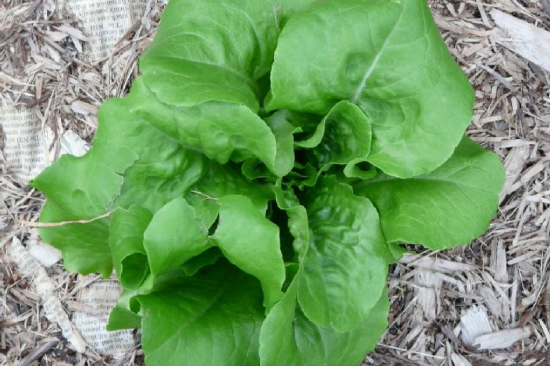
Iceberg
Iceberg lettuce is the most common of all lettuce varieties in the United States; it outsells all other varieties combined. Its tightly packed spherical head is composed of crisp, pale green leaves with a very mild flavor. Iceberg lettuce remains crisp for a relatively long time after being cut or pre pared. Select heads that are firm but not hard and leaves that are free of burnt or rusty tips.
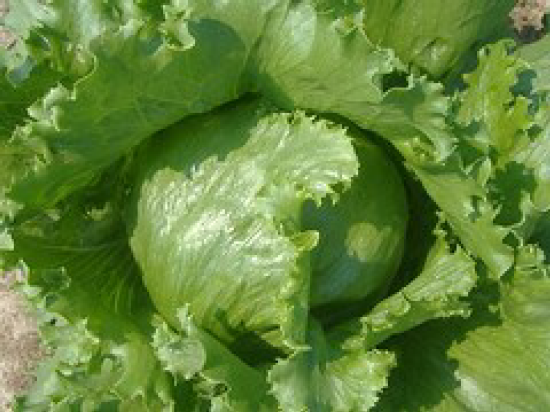
Leaf
Leaf lettuce grows in bunches. It has se par ate, ruffle-edged leaves branching from a stalk. Because it does not grow into a firm head, it is easily damaged during harvest and transport. Both red and green leaf lettuce have bright colors, mild flavors and tender leaves. Good quality leaf lettuce should have nicely shaped leaves free of bruises, breaks, or brown spots.
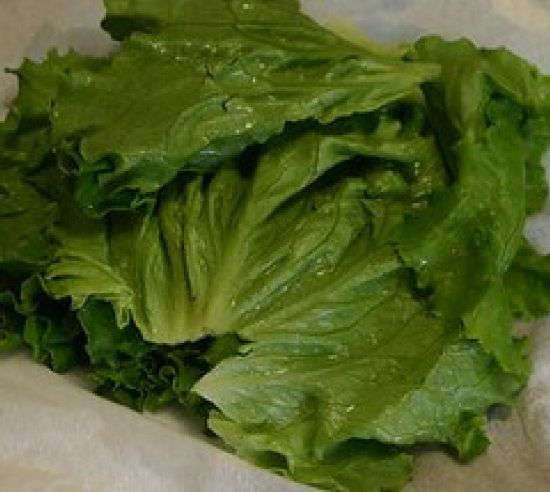
Romaine
Romaine lettuce, also known as ‘cos’, is a loosely packed head lettuce with elongated leaves and thick midribs. Its outer leaves are dark green and although they look coarse, they are crisp, tender and tasty without being bitter. The core leaves are paler and tenderer but still crisp. Romaine has enough flavor to stand up to strongly flavored dressings such as the garlic and Parmesan cheese used in a Caesar salad. A good-quality head of romaine has dark green outer leaves that are free of blemishes or yellowing.
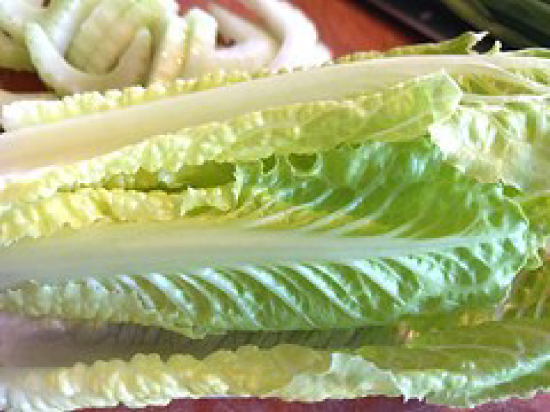
Baby Lettuces
Innovative chefs are always loo king for new and different foods to acid a twist or flair to their dishes.
This has led to the popularity of baby lettuces and other specialty greens. Baby greens have similar but more subtle flavors than their mature versions. They are often less bitter and are always more tender and delicate. Because of their size and variety, they are perfect for composed salads. Mesclun is a mixture of several kinds of baby lettuces.
Micro greens are even smaller than baby lettuces. They are the first true leaves of virtually any edible greens, such as lettuce, spinach, kale and so on. Micro greens are very fragile and must be handpicked and carefully packaged for delivery. Chefs enjoy using them as garnish, especially on entree and appetizer plates.
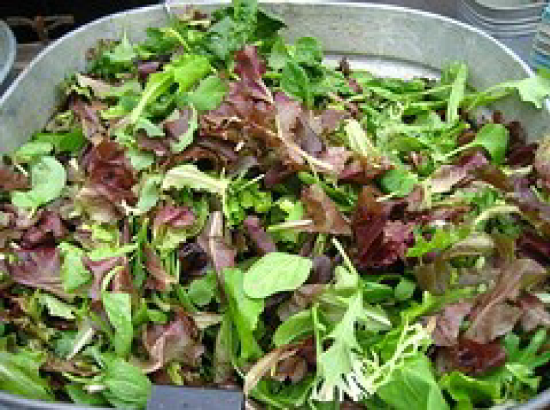
Chicory
Chicories come in a variety of colors, shapes and sizes; most are slightly bitter. Chicories are quite hearty and can also be cooked, usually grilled or braised.
Belgian Endive
Belgian endive grows in small, tight heads with pointed leaves. It is actually the shoo t of a chicory root. The small sturdy leaves are white at the base with yellow fringes and tip s. (A purple-tipped variety is sometimes available.) Whole leaves can be separated, trimmed and filled with soft butters, cheeses or spreads and served as an hors d'oeuvre, or they can be use d for composed salads. The leaves cut or whole can also be added to cold salads. Heads of Belgian endive are often braised or grilled and served with meat or poultry. As the name suggests, Belgian endive is imported from Belgium but a commercial crop is now produced in California as well.
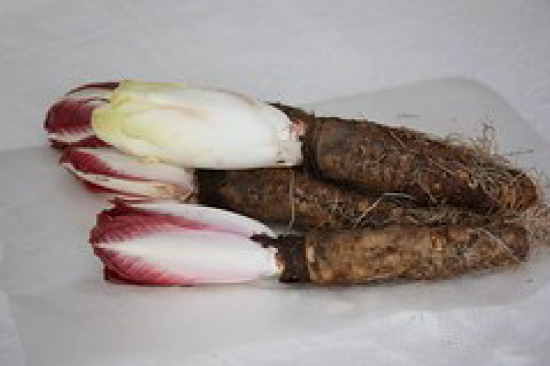
Curly Endive
In the United States, curly endive is often called by its family name, chicory, or its French name, frisee. The dark green outer leaves are pointed, sturdy and slightly bitter. The yellow inner leaves are more tender and less bitter. Curly endive has a strong flavor that goes well with strong cheeses, game and citrus. It is often mixed with other greens to add texture and flavor.
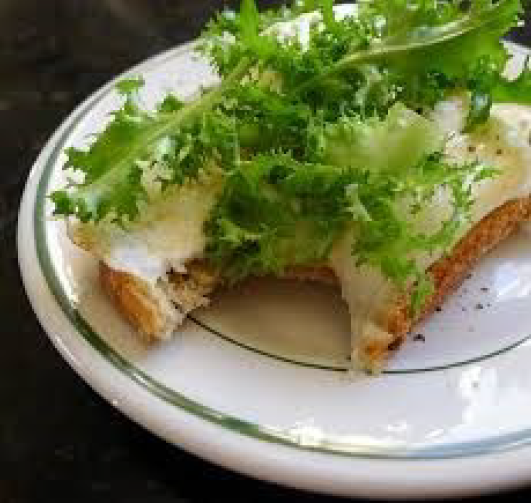
Escarole
Escarole, sometimes called broadleaf endive, has thick leaves and a slightly bitter flavor. It has green outer leaves and pale green or yellow center leaves. Escarole is very sturdy and is often mixed with other greens for added texture. Its strong flavor stands up to full-flavored dressings and is a good accompaniment to grilled meats and poultry.
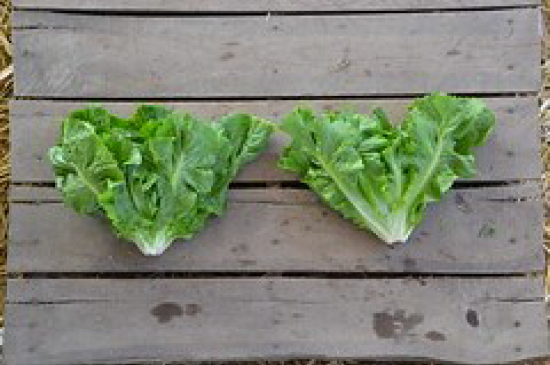
Radicchio
Radicchio resembles a small reel cabbage. It retains its bright reddish color when cooked and is popular braised or grilled and served as a vegetable side dish. Because of its attractive color, radicchio is popular in cold salads, but it has a very bitter flavor and should be used sparingly and mixed with other greens in a tossed salad. The leaves form cups when separated and can be used to hold other ingredients when preparing composed salads. Radicchio is quite expensive and availability is sometimes limited.
Other Salad Greens and Ingredients
Leafy vegetables besides lettuce and chicory, as well as other ingredients, are used to ad d texture, flavor and color to salads. A partial listing follows.
Arugula
Arugula, also known as ‘rocket’, is a member of the cabbage family. Arugula leaves are somewhat similar to broad dandelion leaves in size and shape. The best are 2 to 4 inches (5 to 10 centimeters) long. Arugula has a very strong, spicy, peppery flavor so strong, in fact, that it is rarely served by itself. It is best when used to acid zip to salads by combining it with other greens.
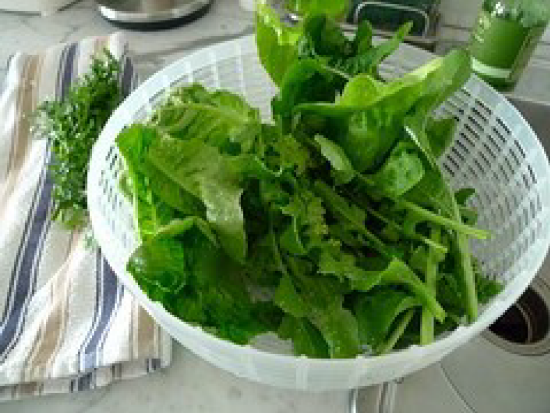
Dandelion
Dandelion grows as a weed throughout most of the United States. It has long, thin, toothed leaves with a prominent midrib. When purchasing dandelion for salads, look for small leaves; they are tenderer and less bitter. Older, tougher leaves can be cooked and served as a vegetable.
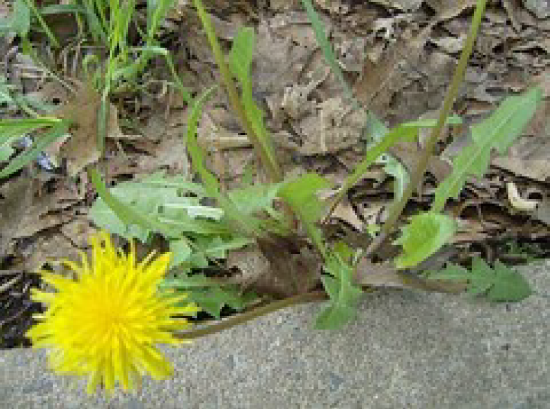
Mache
Mache or lamb's lettuce is very tender and very delicately flavored. Its small, curved, pale to dark green leaves have a slightly nutty flavor. Because its flavor is so delicate, Mache should be combined only with other delicately flavored greens such as Boston or Bibb lettuce and dressed sparingly with a light vinaigrette dressing.
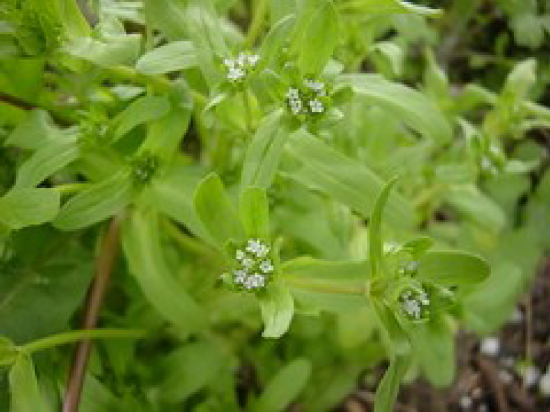
Sorrel
Sorrel, sometimes called sour grass, has leaves similar to spinach in color and shape. Sorrel has a very tart, lemony flavor that goes well with fish and shellfish. It should be used sparingly and combined with other greens in a salad. Sorrel can also be made into soups, sauces and purees.
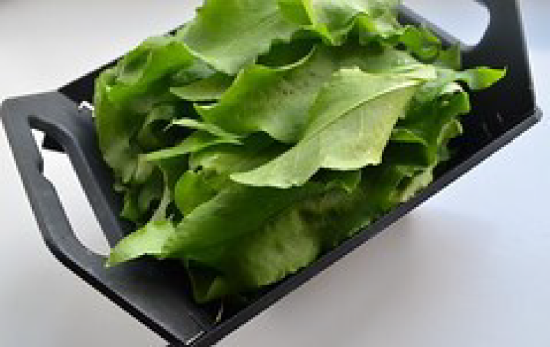
Spinach
Like sorrel, spinach can be cooked or used as a salad green. As a salad green, it is popularly served tossed with hot bacon dressing. Spinach is deep green with a rich flavor and tender texture. Good-quality spinach should be fairly crisp. Avoid wilted or yellowed bunches.
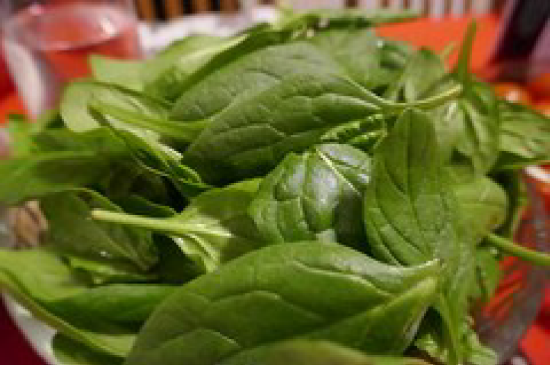
Sprouts
Sprouts are not salad greens but are often used as such in salads and sandwiches. Sprouts are very young alfalfa, daikon or mustard plants. Alfalfa sprouts are very mild and sweet. Daikon and mustard sprouts are quite peppery.
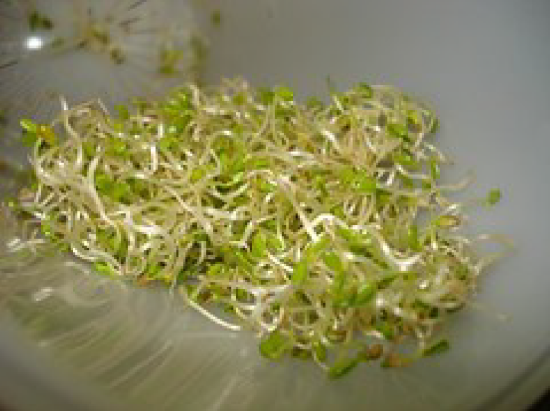
Watercress
Watercress has tiny, dime-sized leaves and substantial stems. It has a peppery flavor and adds spice to a salad. Good-quality fresh watercress is dark green with no yellowing. To preserve it freshness, watercress must be kept very cold and moist. It is normally packed topped with ice. Individual leaves are plucked from the stems and rinsed just before service.
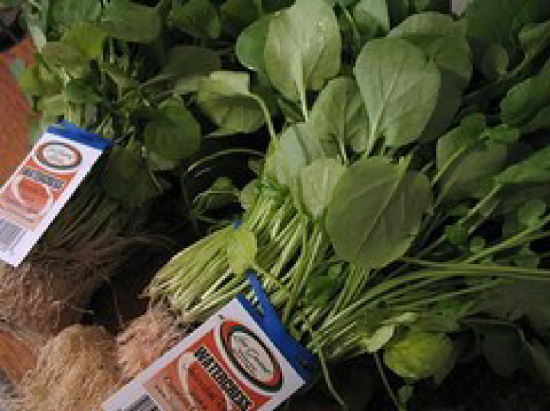
Edible Flowers
Many specialty produce growers offer edible, pesticide-free blossoms. They are used for salads and as garnishes wherever a splash of color would be appreciated. Some flowers such as nasturtiums, calenclulas and pansies are grown and picked specifically for eating. Others, such as yellow cucumber flowers and squash blossoms, are by-products of the vegetable industry.
Squash blossoms and other very large flowers should be cut in julienne strips before being added to salads. Pick petals from large and medium-sized flowers. Smaller whole flowers can be tossed in a salad or used as a garnish when composing a salad. Very small flowers or petals should be sprinkled on top of a salad so that they are not hidden by the greens.
Note: Many flowers and blossoms are toxic, especially those grown from bulbs. Even flowers that would otherwise be edible may contain pesticides that can be harmful if ingested. Use only flowers grown specifically for use as food; purchase edible flowers only from reputable purveyors.
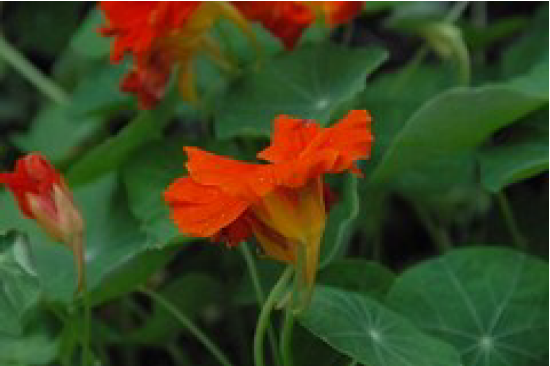
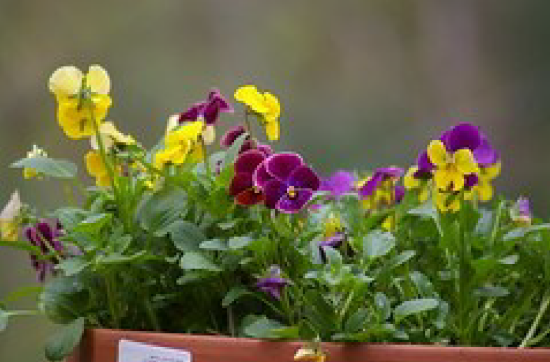
Nasturtium Pansies
Fresh Herbs
Basil, thyme, tarragon, oregano, dill, cilantro, marjoram, mint, sage, savory and even rosemary are used to acid interesting flavors to otherwise ordinary salads. Because many herbs have strong flavors, use them sparingly so that the delicate flavors of the greens are not overpowered. Leafy herbs such as basil and sage can be cut chiffonade. Other herbs can be picked from their stems or chopped before being tossed with the salad greens. Flowering herbs such as chive blossoms are used like other edible flowers to add color, flavor and aroma.


